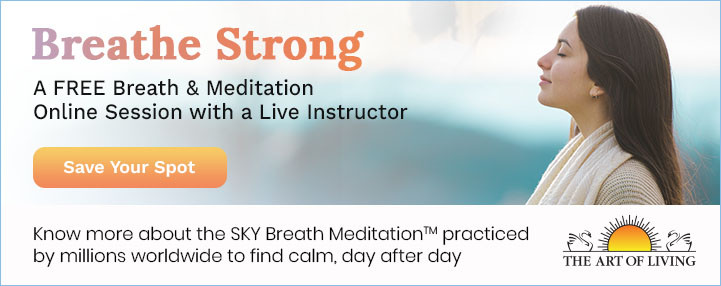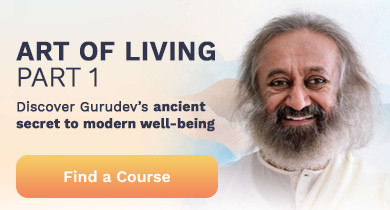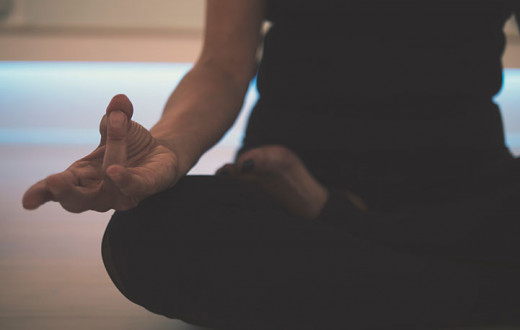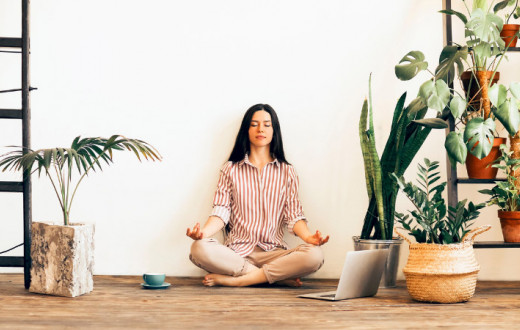
Mindfulness is the practice of living in the present moment and being completely aware of what’s happening around you. Although it hasn’t always been popular in the Western world, meditation became more and more popular in the 1960s as hundreds of thousands of people started picking up meditation across the United States. Later in 1979, Jon Kabat-Zinn began formal meditation investigations at the University of Massachusetts, creating the Mindfulness-Based Stress Reduction (MBSR) program.
Nowadays, more and more people are turning to mindfulness techniques and forms of meditation to help them manage stress, prevent burnout, and deal with the demands of their everyday life. From mindfulness-based cognitive therapy (MBCT) to mindfulness meditation training, everyone is talking about the benefits of mindfulness.
Have you been asking yourself, "What is mindfulness?". If so, you're in the right place! In this post, we will discuss what mindfulness is and help you understand how some people practice it, such as through meditation. We will also look at alternative practices that can help you stay in the present moment, feel calm, increase focus, and reduce negative emotions.
What is a mindfulness practice?
Most people find that their mind wanders or is always engaged in something, making it hard to focus on one thing. We might be thinking about what we have to do, what we've done, or get overwhelmed by negative thoughts that aren’t easy to calm.
Mindfulness is a way to bring your mind back to the present moment so you can focus on what you are doing now. There are many types of mindfulness exercises you can practice. However, the following three are some popular forms of mindfulness meditation.
Body scan meditation
Body scan meditations help you feel more connected to your physical self and are a great way to bring your attention to your body.
During mindfulness meditation practice, you’ll lie down on your back comfortably and slowly bring your attention to a specific part of your body. It can be your hands, toes, head, or shoulders — wherever you prefer to start. Focus on that spot while you breathe slowly, observings the physical sensations that may be present, such as pain, tension, or anything else that may be unusual.
The important thing is to go slowly, but acknowledge how you feel each step of the way and keep your attention on your breathing. When you feel ready, move on to another part of your body.
Thought observation
Rather than observing how your body feels, this kind of mindfulness meditation practice is all about paying attention to your thoughts and feelings. Most of us are used to rolling with our thoughts as soon as we have them, either acting on them or building on the thought to create new ones. While there is nothing wrong with this, observing your thoughts as they come can help you cultivate awareness and improve your psychological health.
It can be challenging to just let your thoughts come and go without doing anything about them, especially if it’s your first time practicing this technique. Deep breathing can help you avoid getting carried away with your thoughts.
Sensation observation
Another way to incorporate mindfulness into your life is by being completely, 100% present with your activities. Practicing sensation observation while you eat helps you savor the flavors and textures of your food so you enjoy each bite more. However, this type of mindfulness can be practiced at any point in the day as you pause to pay attention to how the breeze feels on your skin, the sunshine warms your hair, or the fabric of clothes make your skin feel.
The benefits of mindfulness meditation
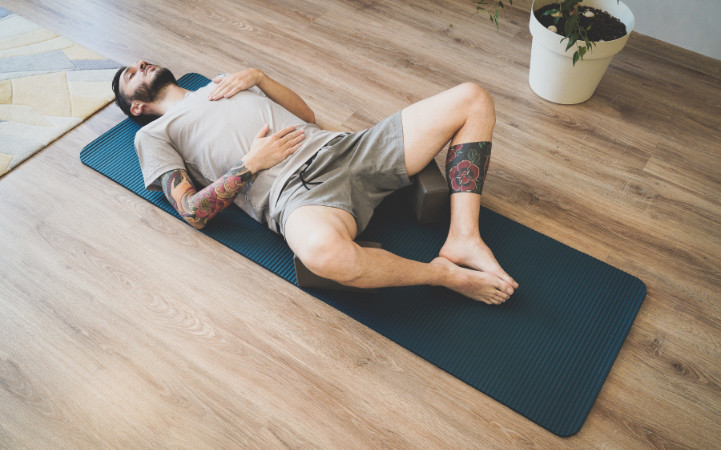
With regular practice, mindfulness meditation can benefit your mental, emotional, and physical health in many ways.
Improved mental clarity
Brain fog and racing thoughts make it hard to feel motivated or perform your best at work or school. Mindfulness training through meditation will allow you to cultivate moment-to-moment awareness of what’s going on, enhancing your ability to repress distracting information. You’ll be able to get more done without thinking about what you have to do later or stressing about yesterday. When you are completely focused on what you’re doing, you’ll likely find yourself getting more tasks done and doing a better job.
Enhanced emotional regulation
Research shows that people who practice mindfulness experience an improved ability to regulate their emotions over time. For example, when studying the science of mindfulness meditation, researchers found those who practice it experience less anxiety, depression, and emotional distress. One reason is that the state of mindfulness helps you recognize your emotions without acting on them, making self-regulation of emotions easier when facing upsetting thoughts or images.
In this way, mindfulness helps to reduce stress, promote well-being, and aid with emotion regulation. As a result, some practitioners are using mindfulness-based interventions along with cognitive behavioral therapy to treat patients with mental health conditions.
Thus, practicing mindfulness meditation is a great thing to incorporate into your self-care routine.
Physical improvements
Mindfulness through meditation doesn’t just benefit your mental state and emotions — it can improve your physical health! One reason for this effect is that stress can lead to health issues, such as:
- Headaches
- Insomnia
- Stress rash
- Teeth grinding
- Fatigue
- High blood pressure
Using mindfulness meditations over time to manage your stress may cause these symptoms to disappear, improving your overall well-being.
In addition to combating stress and the plethora of side effects it can cause, researchers have also linked mindfulness with improved immune function.
People who practice mindfulness during their meditation sessions are also more likely to stick to other healthy habits thanks to their increased focus. As a result, they enjoy better cardiovascular health.
Moreover, individuals who are facing chronic pain or illnesses also find that mindfulness makes their symptoms more tolerable and increases their energy levels.
The limitations of mindfulness meditation
Despite all the benefits of mindfulness, there are some limitations too. For example, when dealing with physical pain, mindfulness allows you to observe the pain so you don’t get lost in it, but it doesn’t necessarily reduce its intensity or frequency.
Likewise, mindfulness isn’t an instant cure. True mindfulness is actually the result of a regular practice of meditation. In deep meditation, your mind gets complete rest, which leads to so many health benefits. So while doing a guided meditation is a great way to unwind at the end of the day, it won’t necessarily lead to the effects of mindfulness if you aren’t making meditation a regular part of your life.
Because mindfulness is an outcome of meditation, the best route is to learn how to meditate. Many people don’t know where to begin, and although they try, getting started feels like a chore. Thankfully, courses, such as SKY Breath Meditation, can help. This particular course teaches you the meditation techniques you need to reduce stress and improve your quality of life without making it complicated.
Experience SKY Breath Meditation with The Art of Living
Mindfulness is the result of meditation and meditation has the power to change your life, but only if you do it right! If you want to experience the physical, mental, and emotional health benefits we covered in this guide, why not try SKY Breath Meditation? This simple breath-based meditation practice you can learn in just 3 days!
Breath-based practices are incredibly powerful and help you to get to the core of the issues that ail you. With regular meditation, practitioners feel calm, energetic, and transformed. From a reduction in anxiety to increased self-awareness and self-compassion, breath meditation is a great tool to have in your kit, especially when getting started with meditation.
While mindfulness practices are popular these days, one of the best ways to achieve mindful awareness is through breathing meditations, which help people to go deeper more quickly. They are also often easier for people with busy minds. So if you find meditation stressful (oh the irony!), but would like to begin a more formal and easier meditation practice, SKY is a great start.
If you would like to practice meditation regularly and enjoy these benefits, we are pleased to invite you to join us for a free online breath meditation class. Your skilled instructor will guide you through meditation and breathing practice, and explain more about the full program.
Learn more about SKY today by joining a free introductory session!

